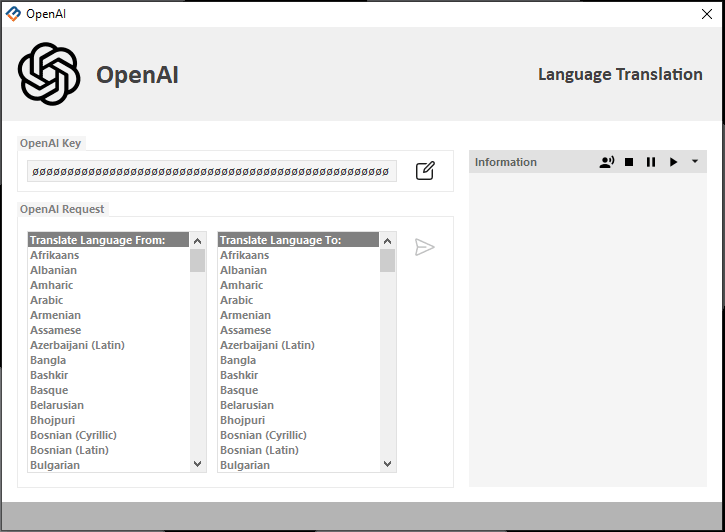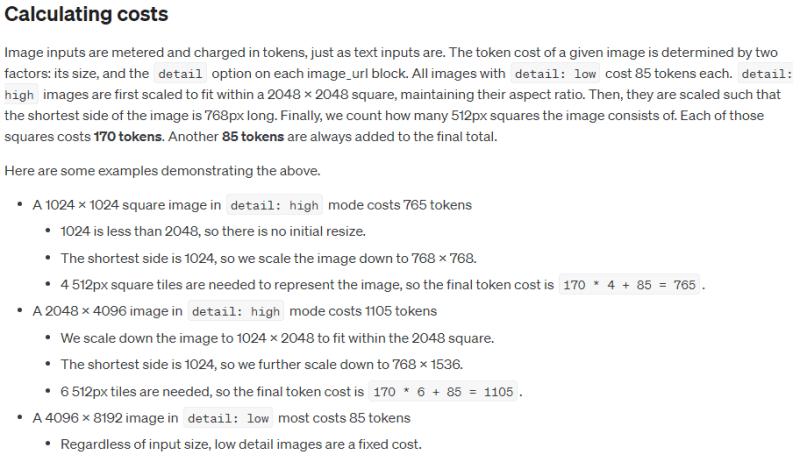So with the new ChatGPT 4o I thought I'd ask ChatGPT how it would achieve this and this was the response:
Integrating ChatGPT-4 into Visual FoxPro (VFP) 9 to pass images for information identification involves several steps. Here's a high-level overview of the process:
1. API Access
First, you need access to the OpenAI API, which provides ChatGPT-4 capabilities.
2. Image Processing API
ChatGPT-4 primarily handles text. For image processing, you might need to use additional services such as OpenAI's DALL-E for image generation or other image recognition APIs like Google Vision API, Microsoft Azure Cognitive Services, or Amazon Rekognition.
3. Setting Up API Calls in VFP
Visual FoxPro can make HTTP requests to external APIs. You will need to use these capabilities to interact with the necessary APIs.
4. Handling JSON
APIs typically return data in JSON format. VFP needs to parse this JSON to handle the responses.
Steps to Implement
Step 1: Obtain API Keys
Get API keys from OpenAI and your chosen image processing service.
Step 2: Make HTTP Requests from VFP
Use VFP's XMLHTTP or WinHttp.WinHttpRequest to make HTTP requests. Here’s a basic example of making a GET request:
Code:
LOCAL loHttp, lcUrl, lcResponse
loHttp = CREATEOBJECT("MSXML2.ServerXMLHTTP.6.0")
lcUrl = "[URL unfurl="true"]https://api.example.com/endpoint"[/URL]
loHttp.Open("GET", lcUrl, .F.)
loHttp.setRequestHeader("Content-Type", "application/json")
loHttp.setRequestHeader("Authorization", "Bearer YOUR_API_KEY")
loHttp.Send()
lcResponse = loHttp.responseText
? lcResponse
Step 3: Uploading Images
For uploading images, you might use a POST request. Here's a basic example of a POST request:
Code:
LOCAL loHttp, lcUrl, lcImagePath, lcResponse, lcImageBase64
lcImagePath = "C:\path\to\your\image.jpg"
lcImageBase64 = FILETOSTR(lcImagePath) && You might need to encode this to base64 if required by the API
loHttp = CREATEOBJECT("MSXML2.ServerXMLHTTP.6.0")
lcUrl = "[URL unfurl="true"]https://api.example.com/upload"[/URL]
loHttp.Open("POST", lcUrl, .F.)
loHttp.setRequestHeader("Content-Type", "application/json")
loHttp.setRequestHeader("Authorization", "Bearer YOUR_API_KEY")
LOCAL lcRequestBody
lcRequestBody = '{"image": "' + lcImageBase64 + '"}'
loHttp.Send(lcRequestBody)
lcResponse = loHttp.responseText
? lcResponse
Step 4: Parsing JSON Response
VFP doesn’t have native JSON parsing capabilities, but you can use a third-party library like VFP-JSON or write your own parser.
Code:
* Assuming you have a JSON parser
LOCAL loJson, loResponse
loJson = CREATEOBJECT("YourJsonParser")
loResponse = loJson.Parse(lcResponse)
Step 5: Integrating with ChatGPT
You can send text obtained from the image processing API to ChatGPT for further analysis.
Code:
LOCAL loHttp, lcUrl, lcResponse
loHttp = CREATEOBJECT("MSXML2.ServerXMLHTTP.6.0")
lcUrl = "[URL unfurl="true"]https://api.openai.com/v1/engines/davinci-codex/completions"[/URL]
loHttp.Open("POST", lcUrl, .F.)
loHttp.setRequestHeader("Content-Type", "application/json")
loHttp.setRequestHeader("Authorization", "Bearer YOUR_OPENAI_API_KEY")
LOCAL lcRequestBody
lcRequestBody = '{"prompt": "Your text here", "max_tokens": 100}'
loHttp.Send(lcRequestBody)
lcResponse = loHttp.responseText
? lcResponse
Example Workflow
Upload Image: Use VFP to send an image to the image processing API.
Get Text Information: Parse the response to extract text or other information from the image.
Send to ChatGPT: Use the extracted text to formulate a query to ChatGPT.
Process Response: Parse and handle the response from ChatGPT in your VFP application.
Considerations
Error Handling: Implement robust error handling for API calls.
Security: Securely store and handle API keys.
Performance: Consider the latency of API calls and handle them asynchronously if needed.
This approach should give you a foundational framework to integrate ChatGPT-4 and image processing capabilities into your VFP 9 application.
I haven't tried it yet, but thought this might be an interesting point to start from.
Best Regards,
Scott
MSc ISM, MIET, MASHRAE, CDCAP, CDCP, CDCS, CDCE, CTDC, CTIA, ATS, ATD
"I try to be nice, but sometimes my mouth doesn't cooperate.



